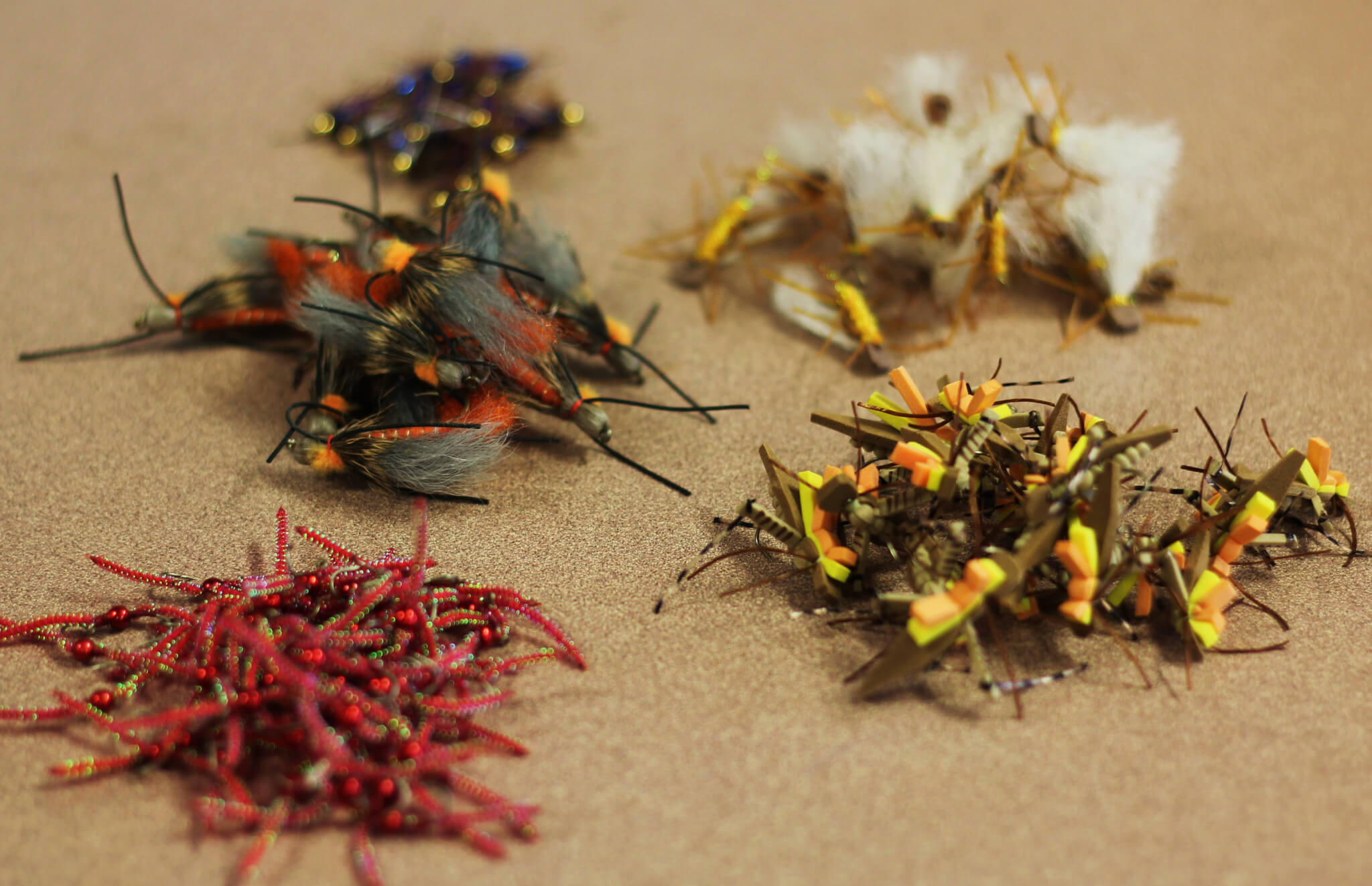Why are we grouping these two together, when they’re so taxonomically different? Because the same fly that works in the morning will work in the evening, so with the same imitation, we lump them together. The PMD’s and PED’s are the first hatches post run-off that can be wader friendly for fly fishing, and the PMD’s are a classic mayfly hatch. PMD’s have been known to darn near blanket the waters on the Clark Fork River and Bitterroot River, and they’re also very prevalent on Rock Creek and the Blackfoot River. This is a very important insect for Missoula rivers and it’s fisherman.
When we say classic mayfly hatch, it comes from the view many anglers take, declaring matching the hatch as the premiere challenge in fly fishing. During a blanket hatch, the fish definitely key in on certain stages of emergence and adulthood. Because of the feeding complexity, the PMD is a hatch where you buy flies wide and shallow. That means if you buy 6 PMD’s, get two parachutes, two cripples and two emergers. That way, you’re better able to match the insect stage being focused on, instead of having six adults when the trout want cripples. It’s not a bad way to buy flies at any time, but especially important with an abundance of insects. The PED’s aren’t always as abundant, but since you’ll already have a wide array of flies, you’ll be ready!
The PMD nymphs are crawlers, and very poor swimmers. After bottom release, their ascent to the surface is quite feeble. The long, slow rise to the surface gives trout time to gorge, and during emergence trout may be found higher in the water column, following nymphs to the surface. The PMD emergence is one time you may not want your nymph on the bottom, but suspended a little higher up. It’s an exciting way to nymph, sight fishing to suspended fish. A jig Pheasant Tail or a Racing Gold Perdigon is effective at this time. After ascent, PMD’s emerge from their shucks a couple of inches from the surface and finish floating to the meniscus to emerge as adults.
Trout can very specifically target PMD’s after emergence from their shuck but not yet to the surface. Pay close attention to the rise form. If there are no bubbles trailing the rise, chances are very good the fish didn’t break the surface with its mouth, but with its back. Floating a dry fly over a fish that’s not coming to the surface is exceptionally frustrating! If there are no bubbles, attach an emerger or a nymph on a dropper about 4 inches long. This will allow the fly to sink just under the surface film, but not too deeply. You’ll take a lot of “risers” this way.

With the PMD, it’s a good time to talk about the difference between a cripple and an emerger. Our best answer is about 1 second. Mother Nature is not always kind, and when the emergence process is interrupted, the insect quickly goes from emerger to cripple. It’s not as complicated as some people make it out to be. Both cripples and emergers are found in the surface film, and often imitated by the same fly, like a Film Critic. The PMD, with its slow emergence, provides multiple opportunities to use a fly in the film. A rise form to a fly in the film may or may not leave bubbles. Just adds to the puzzle!

Once a PMD has broken through the meniscus and emerged, it must wait for its wings to dry before flying. Depending on weather conditions, an adult can ride on the surface for quite a long distance, again providing the trout with quality feeding opportunities. A Tiltwing Dun or simple parachutes are excellent imitations for the adult.

So let’s make things complicated. PMD’s and PED’s also fall as brown spinners, which is imitated by the Hi-Vis Rusty Spinner. A spinner is a spent adult, returning to the water to finish its life cycle. These spinner falls can occur early in the morning, late at night, or, our favorite, during the hatch. So quite often, you will have the option of Rusty Spinners during the emergence, which adds complexity to matching the hatch. Again, we return to the classic concept of a mayfly hatch. You can find a group of rising fish, and while one may be taking emergers, the fish next to it may be taking adults, cripples or spinners. Which can make matching the hatch an interesting proposition. But isn’t that why we choose to pursue a fish with a measured IQ of 4, to keep things interesting!
Fisherman and guides are pretty spoiled in Missoula, MT having so many great hatches for fly fishing and the PMD is one hatch that last longer then most. This makes it a very important insect and there should be plenty of different stages of imitations in your fly box.




